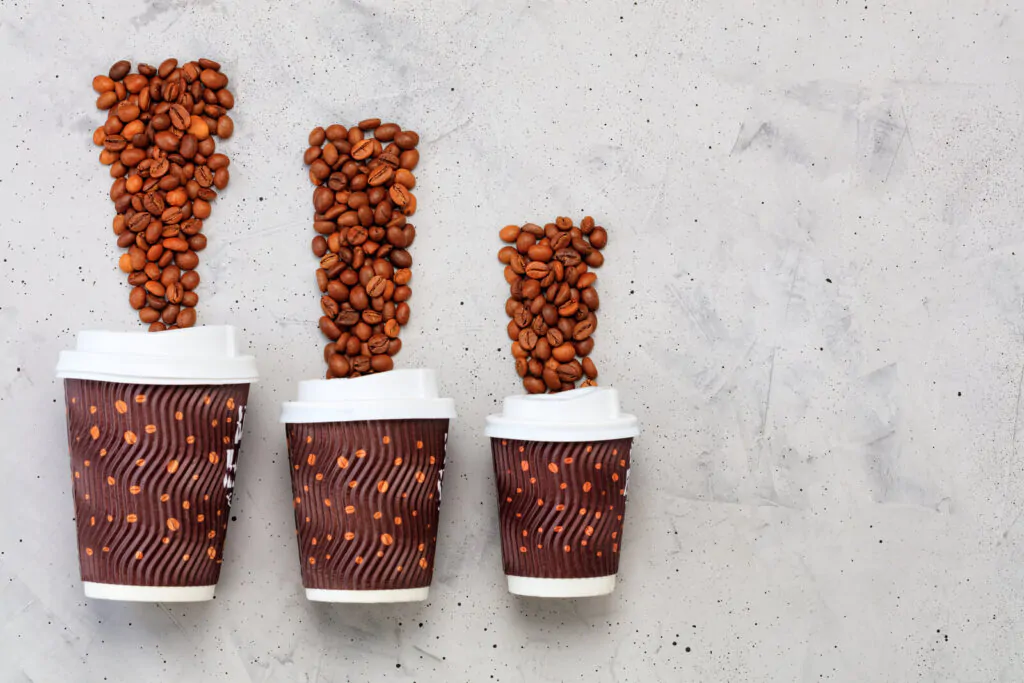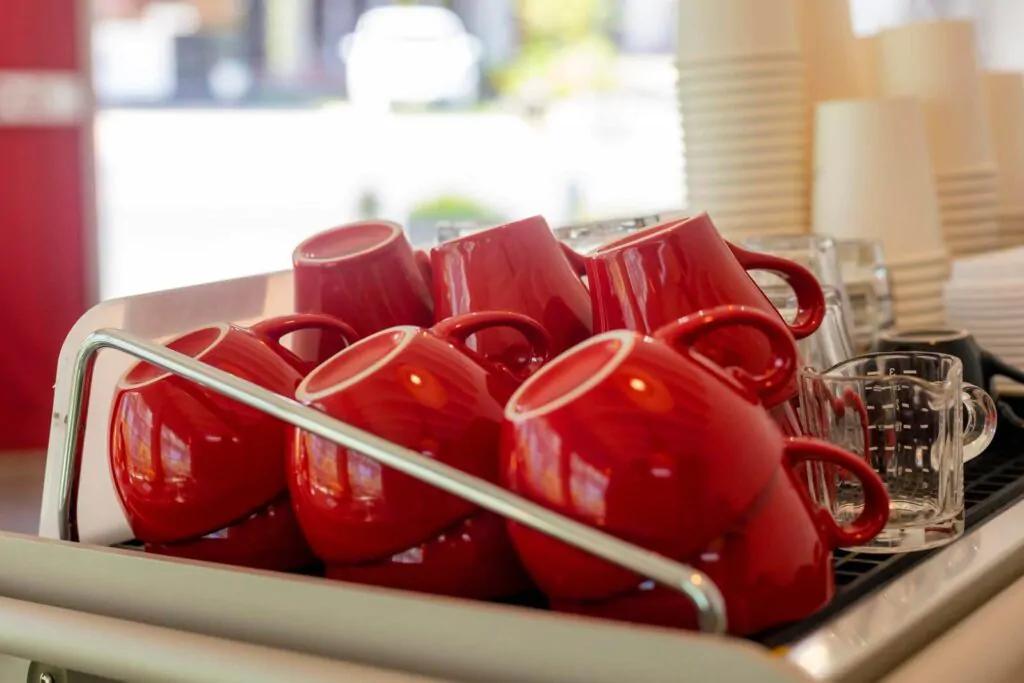As it turns out, size does matter when it comes to your cup of Joe. Read on to find out how tall is a coffee cup and why it is important in terms of serving.

You would think ordering a cup of coffee is easy until your barista starts asking if you want a venti or a grande. It can become confusing if you are not familiar with the coffee shop’s servings, and each of these shops has its own terms for it. For the sake of everyone, I’ll try to explain it as simply as possible.
The standard size of a coffee cup or a coffee mug in the United States is eight ounces to a maximum of ten ounces. The eight-ounce stands at around three and a half inches with a top diameter of three inches. Don’t get confused with the “tall” size you often find in Starbucks because, unfortunately, it is only twelve ounces.
The one you should be looking for is the “short” serving if you are looking for the standard size.
Why Are Eight To Ten Ounces The Standard Size?
Take note that the eight-ounce or ten-ounce are not the standard sizes in some parts of the world. That being said, one general guideline used in brewing coffee is one to two tablespoons of coffee for every six ounces of water; this is called the golden ratio. This is to maximize flavor extraction from the grounds and is usually followed by either home or professional brewers.
The eight-ounce cup is enough for one serving but is not filled to the brim, risking spills. This ratio is usually done in drip or filter coffee, which is the most popular way of brewing in the United States due to how quick it is to brew, and its mild, agreeable taste.
On the other hand, the eight-ounce size allows more flexibility in enhancing the cup of Joe for drinkers if they prefer adding milk or other sweeteners. As the younger generations start to prefer the more flavorful espresso-based drinks, the eight-ounce cup allows for a standard serving, though larger sizes are more recommended.
The Importance Of Coffee Cup Size
The size of your coffee cup matters because it can dictate the type of java you want to drink. For instance, you are not going to use an eight-ounce cup to hold a single espresso shot. For that, you will need a two to three-ounce espresso cup.
Knowing the size is also a helpful way to easily measure or adjust the proportion of the ingredients when you are brewing a special blend. Let us say you are going to make a cappuccino. Generally, a five to a six-ounce coffee cup is used to make this drink.
You can easily do the math in your head and determine that you will need four to five ounces of milk and foam to blend with your one-ounce espresso shot.

If you are making a latte, you will need a much larger cup due to the substantial amount of milk. A 12-ounce cup is suitable to hold the espresso shot and the seven to nine ounces of milk, with enough room for ice if you want it served chilled.
It can also help you measure the caffeine content if you are monitoring your daily intake. An eight-ounce. cup of coffee can contain around 60 mg to as high as 300 mg of caffeine, while a single espresso shot can have as much as 60 mg. It will depend on the type of coffee and the number of coffee beans used.
You can learn more by reading our piece discussing the caffeine content of different cups of coffee.
Knowing the minimum serving size of your favorite coffee brands can aid in monitoring your caffeine intake, too. Starbucks, Tim Hortons, and Costa Coffee have the standard eight ounces, but Dunkin’s smallest serving is ten ounces.
You might be curious why travel mugs are often larger in size. It is because most coffee drinkers who are always on the go will prefer convenience without worrying about coffee coming through the cup’s opening as they walk. They want to have as much warm java as possible for a longer duration of time.
How Tall is a coffee cup in Different Country
The standard eight-ounce size is mostly followed in North America and in a number of South American countries, as their preferred coffee requires add-ons such as milk and or ice. As mentioned earlier, Americans also love their drip coffee, arguably because it has a milder flavor. This allows them to consume and enjoy more cups of coffee per day.
On the other hand, it isn’t uncommon for European coffee shops to have different standard cup sizes. While they do have eight-ounce servings, they prefer using much smaller cups because they tend to love a stronger and more concentrated flavor in small quantities.
That is why it is normal to encounter a two or three-ounce cup in coffee shops, which are used to serve an espresso shot or Turkish coffee, and a six-ounce cup for cappuccino, flat white, and café au lait, among others.
History Of Coffee Cups
The earliest version of the coffee cup can be dated back to the New Stone Age and was made from animal skulls, clay, or wood. As civilizations advanced, new materials were used to craft cups, such as bronze, silver, and other forms of metal, but it posed a problem as these were great heat conductors and were not ideal for holding hot beverages.

It wasn’t until the seventh century that the concept of cups made from porcelain and ceramics started to take off. The material was found to retain temperatures effectively, making it conducive to holding hot or cold beverages. You can learn more about ceramic coffee cups by checking out our guide on the best material to use for coffee cups.
The type of coffee cups we enjoy today can be attributed to the Victor Mug created by the Victor Insulator Co. in 1945 to contribute to the war effort. It was made from ceramic so that it was thicker and heavier to withstand the rough movement of Navy ships.
Interestingly, this mug was actually predated by disposable single-use paper cups. Boston lawyer Lawrence Luellen came up with the “Health Kup” in 1907 to combat the spread of diseases due to sharing communal cups found in public water fountains. This has since evolved into the paper cups we use today.
Learn more in our explainer on are coffee cups oven safe.
